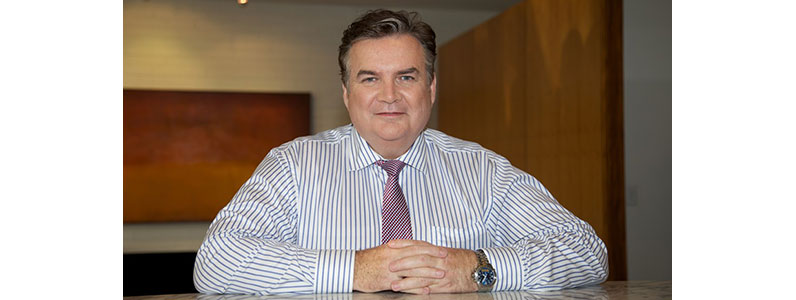
Many Mothers have said “I want my body back” after pregnancy, childbirth and breast feeding
Pregnancy, childbirth and breastfeeding are usually a wonderful time for a woman. It fulfils her biological drive and the strength of emotions experienced helps confirm her biological identity. The anticipation of pregnancy leads to the joy of childbirth and continues with the incredible feeling of bonding while breastfeeding.
For most women this time in their life is one that they remember fondly. Psychologically these powerful feelings of caring for a helpless, joyful and beautiful being offset the changes that may have occurred in the biological journey.
I am often asked by women who have not yet had children what will happen to their bodies after the sequence of pregnancy, childbirth and breastfeeding. Unfortunately this is an almost impossible question to answer, for not only does the individuality of genetics play a very significant role but also other factors will add or detract from the eventual outcome. Some women only have one pregnancy, “carry small” during pregnancy and do not breastfeed.
Clearly the physical changes of such an individual will be entirely different from a woman who has multiple pregnancies, tend to make a lot of amniotic fluid and breastfeeds each child for a significant period of time. But there are no hard and fast rules. Some women may just “be lucky” – or is it their genetics and inherent skin tone?
So what can happen to a woman’s body after this biological journey?
There is no doubt that having babies at a younger age and maintaining a stable weight (apart from the gain of pregnancy) gives the body a greater chance of returning to a pre-pregnancy aesthetic appearance. But sometimes women don’t have these choices and changes that occur may almost be inevitable.
During pregnancy, and particularly near delivery, it is the abdomen that shows the greatest amount of change. To accommodate the enlarging uterus and fetus the muscles of the abdominal wall stretch, elongate and lengthen. These muscles may also separate in the midline giving rise to a condition called a divarification.
When the muscles stretch, elongate and lengthen they will also have a direct impact on the overlying skin effectively making more skin.
Immediately after delivery the cause and effect has been removed and the muscles and skin will begin to return to pre-pregnancy levels.
Is there anything a woman can do to limit unwanted changes?
The biggest unwanted change, commonly in most mothers that I meet, are concerns about the appearance of their breasts after childbirth. However it is not pregnancy and childbirth that has the most profound changes on the breast but breastfeeding.
Breastfeeding is now the recommended method of achieving the nutritional requirements of a newborn and infant. Breast milk contains all of the calories, vitamins, minerals and elements that the newborn child requires. Just as important as the calorific content of breast milk is the transference of natural immunoglobulins from the mother to the child. Immunoglobulins are naturally occurring proteins. They fight infection, build up resistance to disease and help the newborn infant until a natural level of immunoglobulins is achieved by the newborn. It is now well-recognised that children who were breastfed rarely suffer from sniffles and colds and other minor illnesses. These immunoglobulins may also contribute to overall better health throughout life.
There is no agreement as to how long a newborn should be breastfed. Certainly there will be social factors and pressures on some mothers with return-to-work looming. However, the average is probably about 12 months.
So, giving your newborn the best start in life is achieved by breastfeeding, but the price can be high. Mothers who breastfeed their children are more likely to suffer aesthetic breast consequences than those who do not.
The most common issue a mother may experience after breastfeeding for a prolonged period of time is a loss of volume in the breast. Additionally if the breasts became exceptionally engorged in late pregnancy and during breastfeeding stretching of the skin can occur.
This may result in a condition called ptosis where the nipple and indeed the entire breast can droop. If such conditions occur it is very unlikely that natural resolution and a return to a pre-pregnancy state will ensue.
But it is not only this ptosis that can occur after breastfeeding particularly if a woman has breastfed several children. Volume loss can be profound and mothers often feel a loss of their identity as a woman as a result of their breasts virtually disappearing.
Replacement of the volume can only be achieved with breast implants. If, in addition, there is a severe degree of ptosis then a second procedure called a mastopexy may be used to raise the height of the nipple. In suitable individuals the two procedures can be done at the same time and this is called an augmentation/ mastopexy.
Many women, despite feeling a loss of identity, may put off seeking an opinion about breast augmentation and/or mastopexy because they wish to breastfeed in the future. Breastfeeding after breast implants is not only possible but actively encouraged.
The regaining or enhancing of self-esteem and identity is a very important part of the young mother’s life. This can occur naturally, but if the physical changes that have occurred as a result of pregnancy and childbirth and breastfeeding are so profound that one’s body is nothing like it was pre-pregnancy then the intervention of surgery may be the only way to regain a semblance of one’s identity.
MUMMY MAKEOVER AND MEDICARE
A consultation with a qualified and reputable Specialist plastic surgeon will be required to assess each case individually and make the necessary recommendation to Medicare.
The following cases may attract a Medicare item number if you meet the strict criteria:
- A breast lift in the case of severe ptosis (Medicare Item Number 45558)
- An abdominoplasty (tummy tuck) in some cases of excessive overhang of skin/fat (Medicare Item 30177) or for split tummy muscles after pregnancy (Item 30175);
Breast Augmentation, purely for cosmetic reasons, is not covered by Medicare.
Q & A with Dr Patrick Briggs
Hi, looking for some help. I am a mother of 3 kids aged 3-7. My breast has never been particularly big but more so now after the kids and breastfeeding all three. I really don’t need to wear a bra at all and as a result feel somewhat self conscious and would prefer not to show my breasts to my partner. Can you please advise if it would be possible to claim a breast enlargement through Medicare as it is really expensive in Adelaide.
Thanks
Dr Briggs: Breast enlargement as surgery is viewed as purely cosmetic by Medicare and no rebate will be provided.
Since having two children (my youngest 15 months) my breasts are basically saggy skin. I can’t fit normal bras, as due to the amount of skin I need a D cup but I only fill the bottom half so they gape, I can’t wear padded bras to push them up as they just look all wrinkly and when I wear a sports bra they basically fold in half due to the skin. I’m worried that my doctor will just laugh at me if I go and ask for a referral? I don’t think I need a lift, just an implant to fill out the skin. Is there any chance Medicare would cover any of this? I’m not with a health fund.
Dr Briggs: A registered plastic surgeon will need to assess your situation as each patient’s circumstances are different. Recommendations can be made by your surgeon.
I breastfed both my children well past their first year. They are now 6 and 2. It has left my breasts saggy and full of nothing! I can’t stand my husband to see me and it is affecting our marriage. Would I at least get something for a lift?
Dr Briggs: A registered plastic surgeon will need to assess your situation as each patient’s circumstances are different and in your case you might not require a breast lift but a breast augmentation. Recommendations can be made by your surgeon.
Hello I am having a LOT of trouble with my breasts and just want to know if breast reductions are still covered by medicare as my doctor has said they are not…? I am 23 and have size 14-16H/HH boobs… I have ALWAYS had very large breasts and always suffer rashes, headaches, depression and deep grooves in my shoulders…
Dr Briggs: Breast reduction for medical reasons may attract Medicare item number 45523. A registered plastic surgeon, needs to assess your situation as each patient’s circumstances are different. Recommendations can be made by your surgeon.
Further Information about Mummy Makeover Surgery
- Post-Pregnancy Procedures Perth WA
- Plastic Surgeon | Post Pregnancy Surgery Perth
- Mummy Makeover in Sydney – Soliman Plastic Surgery
- Post-Pregnancy Surgeries Melbourne
More PSH Blogs by Dr Patrick Briggs Melbourne Plastic Surgeon
- Mummy Makeover Patient Story with Dr Patrick Briggs
- Laura’s Lift – Breast Lift, Mastopexy Plastic Surgery Results
- Surgery for those in Rural Areas with Dr Briggs
To Contact Dr Patrick Briggs
If you’d like more information about breast reduction or any procedures, you can contact Dr Patrick Briggs at his clinic or check out the blogs

